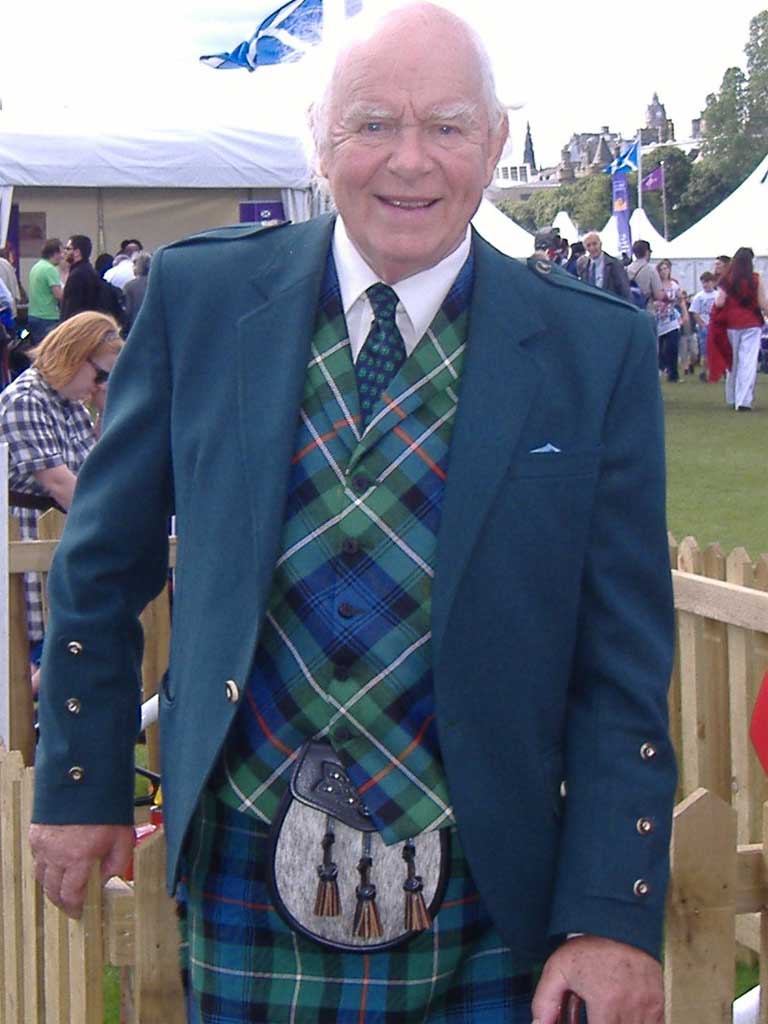Iain MacKenzie: Civil servant whose drive was crucial to Scottish heritage

Your support helps us to tell the story
From reproductive rights to climate change to Big Tech, The Independent is on the ground when the story is developing. Whether it's investigating the financials of Elon Musk's pro-Trump PAC or producing our latest documentary, 'The A Word', which shines a light on the American women fighting for reproductive rights, we know how important it is to parse out the facts from the messaging.
At such a critical moment in US history, we need reporters on the ground. Your donation allows us to keep sending journalists to speak to both sides of the story.
The Independent is trusted by Americans across the entire political spectrum. And unlike many other quality news outlets, we choose not to lock Americans out of our reporting and analysis with paywalls. We believe quality journalism should be available to everyone, paid for by those who can afford it.
Your support makes all the difference.The pleasure that visitors in their hundreds of thousands derive from visits to the great castles of Edinburgh and Stirling is due in part to the dynamic drive of Iain MacKenzie in the 1970s and 1980s. As the senior civil servant in Historic Scotland directly responsible for buildings, MacKenzie initiated the hugely successful shop and other activities which enhanced the visitor-attraction of Edinburgh Castle.
In the face of greater difficulty he played a significant role in the transformation of Stirling Castle, from little more than a dowdy barracks to the spectacular showpiece of medieval Scotland. Without MacKenzie's drive we would not be looking at the famous Stirling Heads or the elegant restoration of Argyle's Lodgings. Neil Hynd, the distinguished architectural professional who saw through the Stirling project to completion, recalled: "At a moment when the whole Stirling Castle project seemed to stall, MacKenzie got the loose ends together and moved the project forward; he was good with politicians."
In my first-hand opinion as a much-involved local MP, MacKenzie had the outstanding knack – all too rare among otherwise excellent civil servants involved in Heritage – of ensuring that the taxpayer got value for money. As a youngster living in Edinburgh he acquired some ferrets and used them to slay rabbits on Corstorphine Hill and in the surrounds of Edinburgh Zoo. He sold the carcasses to wartime butchers, who made delicious rabbit rolls.
Iain MacKenzie was the son ofthe Chief Accountant of the Department of Health in Scotland. He attended the academically rigorous Merchant Company School of Daniel Stewart's then led by its inspirational headmaster, Dr Robbie. Poor eyesight excluded MacKenzie from National Service, a matter of some regret for him, though less so than the family circumstances that denied him the opportunity to take up the university entrance for which he was qualified.
In 1949 he entered the Civil Service, and his father's department. Throughout 40 years of friendship I never did discern his party politics, only that he was an admirer of Aneurin Bevan for having brought the Health Service into being. However, it gives a flavour of his beady-eyed view of human nature if I recount one of MacKenzie's most oft-quoted reminiscences. Asked by MacKenzie how he had won over the doctors to the idea of a national health service, he replied – MacKenzie was not good at imitating the lilting Welsh accent – "I stuffed their pockets with gold."
It was because of MacKenzie's "can-do" attitude, and his proven ability to handle contractors, that MacKenzie was plucked out of the Health Service to be the hands-on enforcement operator seeing to it that public money allocated to Scotland's Heritage was properly used. In no way did he object to the spending of resources on ancient structures; his role was to confront, with his sometimes icy stare, any personage in the building industry whom he suspected of failing to make optimum use of available funds – of, as he said, "squandering precious treasure". He really cared. Professor Roger Mercer of the Royal Commission for Ancient Historical Monuments said he "had an impish sense of humour on serious matters which often lubricated to everybody's benefit the flow of discussion."
The result was that the Scottishoffice, later Historic Scotland, won an international reputation in the third quarter of the 20th century for being highly effective in looking after Scotland's past. Year after year MacKenzie – in harness with his great friend Dr Ian McIver, the enormously erudite and gentle (which MacKenzie was not!) Chief Inspector of Ancient Monuments – would organise a Board tour for the Historic Buildings Council of Scotland. (I was present as a paying spouse, by virtue of my wife Kathleen's membership of the Board.)
Led by distinguished chairmen such as the Earl of Crawford and Balcarres, Magnus Magnusson and Professor Eric Fernie, now of the Courtauld Institute, we would spend three full days in a particular region of Scotland. So I can vouch for the extent to which structures ranging from the Abbey at Arbroath in the east to Loch Sween in the west, from the military barracks at Fort George in the north to Smailholm Tower in the south, benefited from restoration under MacKenzie's direct control.
In retirement, in tandem with his son Gerard, he set up a salmon and trout farm at Loch Fitty in Fife, which was hugely successful while they were in charge. MacKenzie and his wife Florence (Independent obituary, 12 January 2010) were famously hospitable, and made a point of bringing together people who did not know one another, but who, for the sake of the Arts and Heritage in Scotland, ought to have known one another.
Tam Dalyell
Iain James MacKenzie, civil servant: born Edinburgh 13 October 1931; Department of Health, Scottish Office 1959-73; Historic Scotland 1973-1996; married 1957 Florence Miller (one son, one daughter); died Falkirk 1 June 2012.
Join our commenting forum
Join thought-provoking conversations, follow other Independent readers and see their replies
Comments